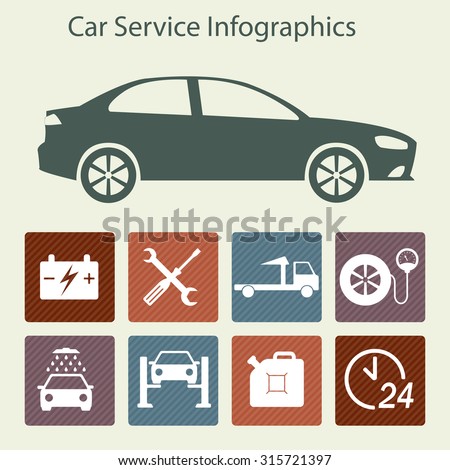Understanding The Definition Behind Your Automobile'S Caution Lights: An Extensive Look
Understanding The Definition Behind Your Automobile'S Caution Lights: An Extensive Look
Blog Article
Created By-Higgins Torres
When you lag the wheel, those glowing warning lights on your dashboard can be a bit puzzling. Do you understand what they're trying to inform you about your automobile's health and wellness? Comprehending the relevance of these lights is important for your safety and the durability of your automobile. So, the next time one of those lights appears, wouldn't you intend to understand its message properly and take the essential actions to address it?
Common Warning Lights and Interpretations
Determine common warning lights in your vehicle and understand their meanings to ensure risk-free driving.
The most common warning lights include the check engine light, which indicates concerns with the engine or exhausts system. If mobilecarwashauckland comes on, it's vital to have your vehicle inspected promptly.
The oil stress alerting light shows low oil pressure, needing immediate attention to prevent engine damage.
A flashing battery light could suggest a defective charging system, potentially leaving you stranded if not addressed.
The tire pressure tracking system (TPMS) light notifies you to reduced tire pressure, impacting vehicle stability and fuel effectiveness. Disregarding this could lead to risky driving problems.
The abdominal muscle light suggests an issue with the anti-lock braking system, compromising your capacity to stop swiftly in emergencies.
Last but not least, the coolant temperature advising light warns of engine getting too hot, which can lead to serious damages otherwise settled swiftly.
Comprehending these typical warning lights will assist you address issues without delay and keep secure driving conditions.
Value of Prompt Interest
Understanding the usual warning lights in your auto is only the primary step; the value of quickly resolving these cautions can't be highlighted sufficient to guarantee your safety and security on the road.
When a warning light illuminates on your control panel, it's your automobile's method of communicating a possible problem that needs focus. Disregarding https://patch.com/new-york/harlem/harlem-developer-unfairly-trying-displace-auto-shop-suit-alleges can cause extra severe problems down the road, jeopardizing your security and possibly costing you much more out of commission.
https://brakerotors73951.blogproducer.com/37878183/the-relationship-in-between-auto-detailing-and-resale-worth-what-research-discloses to alerting lights can stop breakdowns and crashes. As an example, a flashing check engine light could indicate a misfire that, if left unattended, could trigger damage to the catalytic converter. Addressing this promptly can conserve you from an expensive repair.
In a similar way, a brake system advising light could signal low brake fluid or used brake pads, crucial components for your security when driving.
DIY Troubleshooting Tips
If you see a warning light on your dashboard, there are a couple of DIY repairing tips you can attempt before seeking expert help.
The initial step is to consult your vehicle's handbook to understand what the specific caution light suggests. Often the issue can be as easy as a loose gas cap triggering the check engine light. Tightening the gas cap might fix the problem.
One more usual issue is a low battery, which can trigger numerous warning lights. Examining the battery links for rust and ensuring they're protected might fix the issue.
If a caution light continues, you can attempt resetting it by detaching the cars and truck's battery for a few mins and then reconnecting it. Additionally, examining your automobile's liquid degrees, such as oil, coolant, and brake fluid, can assist repair advising lights associated with these systems.
Verdict
To conclude, understanding your auto's caution lights is necessary for maintaining your car running smoothly and safely. By without delay resolving these signals and recognizing what they mean, you can prevent expensive repair work and potential breakdowns.
Bear in mind to consult your auto's handbook for certain information on each cautioning light and act appropriately to ensure a hassle-free driving experience.
Stay informed, remain secure when traveling!
